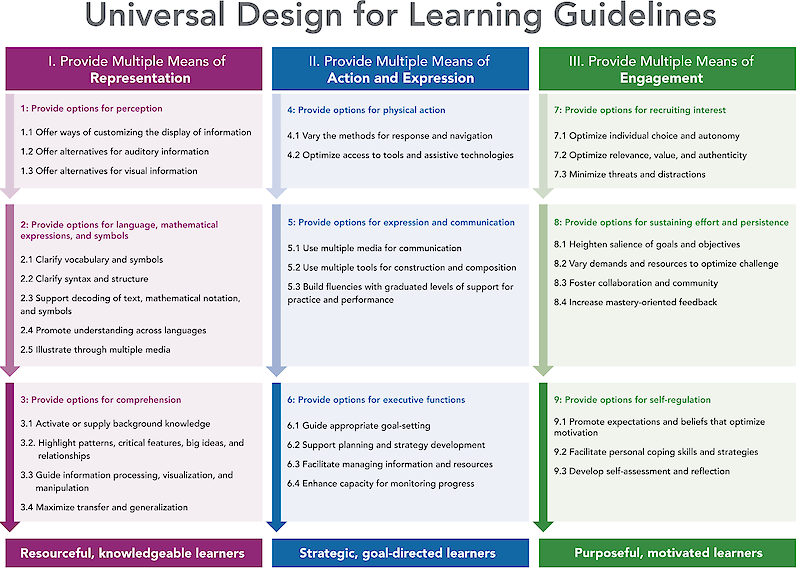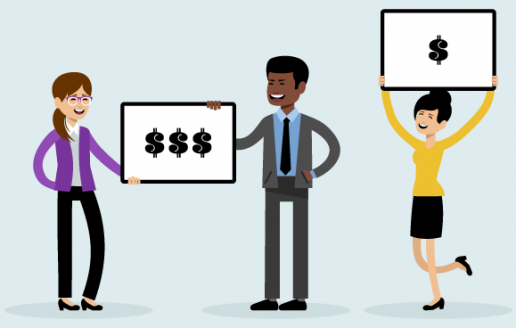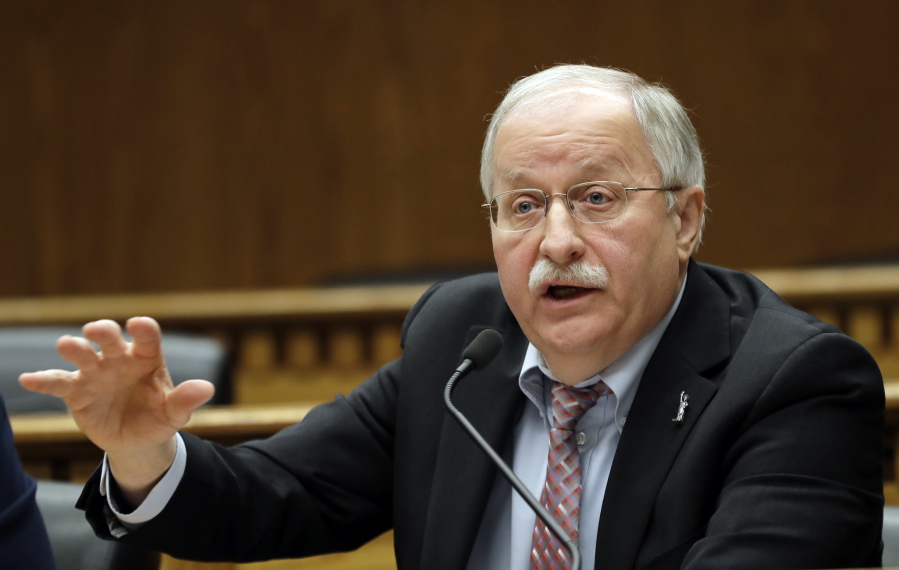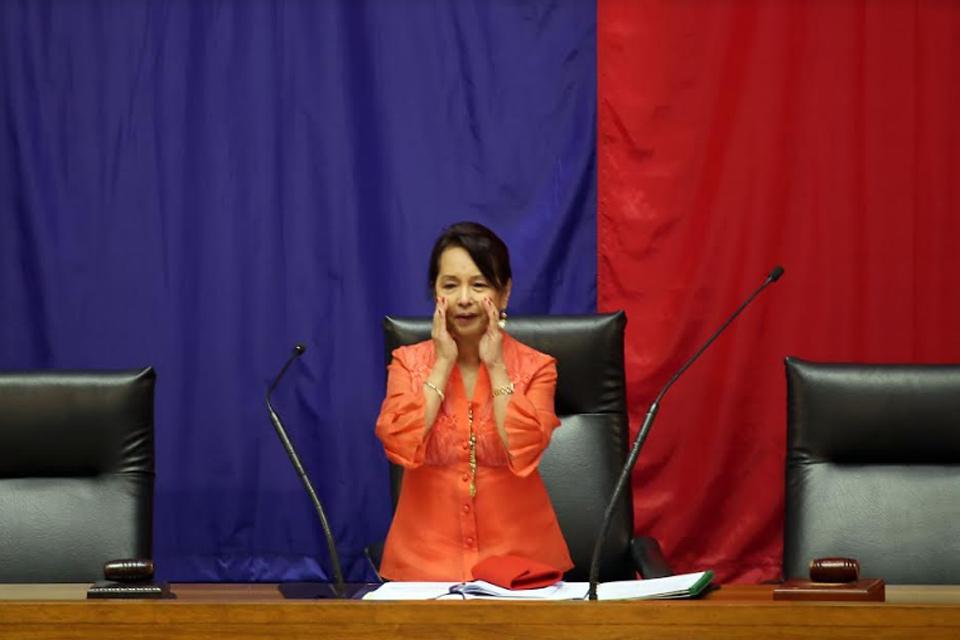Table Of Content

These principles serve as the scaffolding for an educational framework that is adept at handling the unique complexities of how individuals learn. By building on these pillars, educators are equipped to design instructional experiences that can reach and resonate with each student in a diverse classroom. The overarching framework of UDL motivated many stakeholders in the field to begin rethinking the design of their environments and curricula through a UDL lens. However, CAST often received feedback that applying UDL to practice felt overwhelming. In 2009, we developed the first version of the UDL Guidelines in response to this important feedback.
More education articles

Similarly, learners in geography need to understand how to interpret maps. Likewise, many science classes involve diagrams that learners need to read or reproduce. In addition, learners first reading Braille need to recognize each letter by touch.
Western profs use Universal Design for Learning principles to make classes more accessible - The Gazette • Western University's Newspaper
Western profs use Universal Design for Learning principles to make classes more accessible.
Posted: Tue, 05 Mar 2024 08:00:00 GMT [source]
Multiple Means of Action and Expression
Closed captions make television accessible to people who are deaf or who have hearing loss, as well as people at the gym or spouses who can’t agree whether or not to keep the TV on at night. In any class, you know there’s a wide range of enthusiasm, background, and skills among your students. When you plan with this range in mind, you can approach the lesson in several ways. Finally, one of the best ways to use UDL in your classroom is to encourage student participation.
Assessment Example
In addition, teachers can clarify vocabulary or symbols with strategies such as glossaries of important terms. For example, teachers can use a word problem or formula to represent information on a graph. Inspire lifelong curiosity with this game-based PreK-5 learning experience loved by over 40 million children.
Some say, too, that providing accommodations for all can reduce stigma students may feel about using accommodations. The primary focus is on teaching the subject matter students need to learn. Based on our 2-day in-person workshop, this course will support participants to learn everything they need to begin their UDL journey. The course contains content in a variety of formats, review exercises to reinforce learning, and quizzes to ensure you have the foundational knowledge to move through the sections.
UDL Practicum Open Education Resource: AccessibleNU - Northwestern Now
UDL Practicum Open Education Resource: AccessibleNU.
Posted: Fri, 26 May 2023 21:05:16 GMT [source]
How to Deploy Universal Design for Learning (UDL) in Classrooms?

This is an area in which we greatly encourage contributions from the field. By providing different avenues for students to interact with the curriculum, UDL aims to heighten motivation and commitment to learning. This principle seeks to capture the diverse ways in which students can become invested and involved, thereby enriching their educational experiences. The inclusion of interactive tools that teach specific concepts, like narrative structures, and resources that enhance writing skills reflects this principle in action. By embracing these varied methods, students are given the opportunity to use their strengths and preferences to show their learning. In this article, we will delve into the essence of UDL, outlining its principles and the significant advantages it introduces to education.
In other words, UDL helps educators keep desirable challenges in a learning experience and remove unnecessary barriers. You certainly do not need to use every Guideline in a single learning opportunity. In fact, some Guidelines may not be relevant to certain learning goals. The first step in applying the UDL framework to practice is to define a specific, challenging learning goal. This clarity will allow you to strategically mix and match Guidelines and Checkpoints that reduce barriers and support all learners in reaching the learning goal.
Spark students’ interests and motivations by using exciting and relevant content and providing opportunities to participate in their learning actively. Universal Design for Learning recommends providing multiple means of representation so that all students can understand and engage with the content. This could mean using a variety of multimedia, including text, audio, images, and videos. It could also mean providing different ways for students to interact with the content, such as through hands-on activities, simulations, and games. The importance of Universal Design for Learning within the educational realm cannot be overstated.
Resources
The framework's holistic approach - which encompasses multiple means of representation, action, and engagement - seeks to cater to the diverse needs of learners. In this model, student engagement includes motivating students toward learning in the classroom. Representation involves supporting a student’s education needs based on factors like disabilities, cultural or language backgrounds, and other needs. And finally, action and expression refers to providing students with means to engage in class based on those needs.
When the COVID-19 pandemic began in 2020, teachers around the United States shifted to distance learning practically overnight. In both general education and special education, many teachers did not have tools or strategies in place to provide deaf students with accessible lessons and support. Teachers needed to change their materials quickly and clearly in order to meet the needs of all their students in the new distance format. The unique needs of deaf and hard of hearing students meant that unique accommodations and solutions needed to be considered and used for the distance learning formats.
What defines effective implementation of UDL is the establishment of classrooms that welcome and support individuals from varied backgrounds, embracing their unique abilities rather than sidelining them. Consequently, the UDL framework serves as a valuable tool in providing multiple methodologies for content acquisition, knowledge demonstration, and the maintenance of motivation. Whether it is through written work, voice recordings, visual displays, or digital storytelling, providing alternatives is key. UDL frameworks provide examples like detailed outlines to aid in organization and graphic organizers to support idea development. Universal Design for Learning is a scientifically grounded educational framework that emphasizes flexibility in both the delivery of instruction and the demonstration of knowledge. Explore Universal Design for Learning (UDL) strategies to enhance accessibility and engagement for all students.
This flexibility is not only about providing alternatives but about embedding inclusivity into the fabric of educational materials and methods. Universal Design for Learning (UDL) takes a broad and inclusive stance toward education, recognizing the rich diversity of students' language skills. It acknowledges that learners come from a variety of linguistic backgrounds, each with unique challenges and abilities. Central to UDL is the goal of granting full access to learning for every student, a goal that is especially pertinent when it comes to language.
In this way, the UDL framework increases opportunities to introduce inclusive practices. Teachers can plan for multiple means before the lesson instead of after, and students will see their peers accessing the curriculum and demonstrating knowledge in a variety of ways. It is imperative for administrators and instructional leaders to “walk the talk” in implementing UDL.
UDL's principle of multiple means of action and expression suggests that students should be allowed to demonstrate their understanding in a variety of ways. To cater to the varied ways students comprehend information, UDL advocates for the delivery of content through multiple means of representation. This approach acknowledges that some students may prefer visual materials, others audio, and yet others might benefit from a kinetic experience. Now that you know a little more about what the UDL framework is and how this strategy can give your students more personalized support, let’s discuss how to get started. You can use the following strategies to incorporate Universal Design for Learning tools into your classroom.
It can help you make sure that the greatest range of students can access and engage in learning — not just certain students. The ultimate goal of UDL is for all learners to become “expert learners.” Expert learners are purposeful and motivated, resourceful and knowledgeable, and strategic and goal-directed about learning. Teachers can use many strategies to support learners accessing coded content. For instance, teachers can offer alternatives for visual information, such as audio recordings or text-to-speech software.
You don’t need specific tools or technologies to follow UDL’s principles either. Instead, your students choose from the tools and resources you already have. If you use materials not explicitly designed for UDL, you may need to modify them to make them more accessible and inclusive. This could include changing the font size, adding alternate text, and increasing the contrast of colors. UDL helps to make learning more engaging and exciting for all students. When students are actively engaged in their learning, they are more likely to succeed.




















